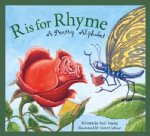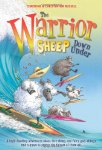Many children dream of being an adventurer, a "discoverer" who does something that makes them famous. They play at being an archaeologist who finds the tomb of an ancient king or queen. They pretend that they are travelling through a snake-infested jungle where they find a species of dinosaur. They dig holes all over the garden looking for the lost gold of a pirate.
The main character in today's fiction title is just such a discoverer. She has big and grand dreams, but in the end what she discovers is more precious than the gold she dreams of finding.
The main character in today's fiction title is just such a discoverer. She has big and grand dreams, but in the end what she discovers is more precious than the gold she dreams of finding.
Candice Ransom
Illustrated by Heather Ross
Fiction
For ages 7 to 9
Hyperion, 2012, 978-142313173-1
Not long ago, Iva’s father gave her a few things that belonged to her great-grandfather Ludwell Honeycutt. The stack of old National Geographic magazines, the geography bee medal (from 1923), and the tire record book that belonged to Ludwell are some of her most treasured possessions. One day Iva discovers that there two pieces of paper inside one of the magazines. One is a letter that her great-grandfather received from the National Geographic Society in which the secretary of the society says that Ludwell cannot become a member until he discovers something. Now that the summer vacation has begun, Iva decides that she is going to fulfill Ludwell’s dream. She is going to be a discoverer.
The second piece of paper that Iva found in the magazine is a map. After a little investigating, Iva decides that the map will lead her to where General Braddock buried a stash of gold. The story is that he stopped in her town, Uncertain, when he was on his way to Pennsylvania to fight the French during the French and Indian War. General Braddock died in battle so he never came back to Uncertain to retrieve the gold.
Iva convinces herself that finding the treasure is going to be “easy peasy,” but she soon comes to the realization that it is not going to be easy at all. Iva’s search for the treasure is made all the more difficult because Heaven, her twice-cousin, keeps messing things up, and Iva’s mother enrolls her in vacation church school.
Heaven is without a doubt one of the biggest trials in Iva’s life. Iva’s two sisters are very close to their of-the-same-age cousins, but Iva is not. In fact she and Heaven fight all the time. Everything Heaven does irritates Iva. Heaven gets a kitten, she is chosen to assist in vacation bible school, and she even steals Iva’s best friend. Iva feels that it is “not fair” that what should have been a great summer full of adventure is turning out to be such a miserable one.
It is never easy being different from other people. There are always grownups around who want you to be like everyone else. Iva is quite content to be different, but she cannot help being hurt when people complain about the fact that she chooses to do things in her own way. Being stubborn and single-minded, Iva fights back, which is how she gets into even more trouble.
With humor, deliciously amusing and colorful characters (some of whom are marvelously eccentric), and a meaningful story, Candice Ransom explores how one girl tries to come to terms with her dreams, expectations, and the needs of those around her.





























